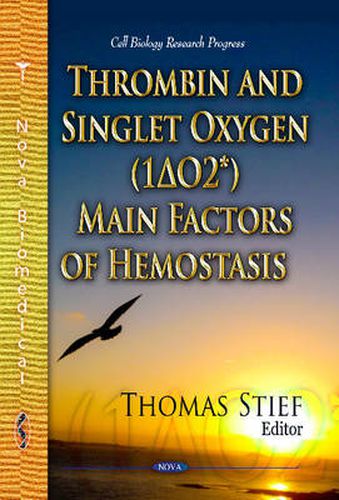Readings Newsletter
Become a Readings Member to make your shopping experience even easier.
Sign in or sign up for free!
You’re not far away from qualifying for FREE standard shipping within Australia
You’ve qualified for FREE standard shipping within Australia
The cart is loading…






Neutrophil granulocytes (PMN) are our primary defence cells against bacteria, fungi, parasites, or micro-thrombi. Their main weapons and signals are the reactive oxygen species (ROS), H2O2 being mother ROS, radicalic OH and non-radicalic 1DELTAO2* being the two daughter ROS. 1DELTAO2* is the most important ROS because it is harmful against non-self and harmless against self . 1DELTAO2* is highly reactive against S-H, S-S, or C=C groups and releases photons (hnu). The activation of the assembly of their NADPH-oxidase, one main trigger (zymosan A) and one main primer (1DELTAO2*/hv) are of great physiological and pathophysiological importance in inflammation and in hemostasis. There is photonic communication: the neutrophils generate different types of photons and they can see them in other cells. The approximate 300-400 nm photons are the main signals and the photons of lowest wave length seem to especially alert them in emergency.
$9.00 standard shipping within Australia
FREE standard shipping within Australia for orders over $100.00
Express & International shipping calculated at checkout
Neutrophil granulocytes (PMN) are our primary defence cells against bacteria, fungi, parasites, or micro-thrombi. Their main weapons and signals are the reactive oxygen species (ROS), H2O2 being mother ROS, radicalic OH and non-radicalic 1DELTAO2* being the two daughter ROS. 1DELTAO2* is the most important ROS because it is harmful against non-self and harmless against self . 1DELTAO2* is highly reactive against S-H, S-S, or C=C groups and releases photons (hnu). The activation of the assembly of their NADPH-oxidase, one main trigger (zymosan A) and one main primer (1DELTAO2*/hv) are of great physiological and pathophysiological importance in inflammation and in hemostasis. There is photonic communication: the neutrophils generate different types of photons and they can see them in other cells. The approximate 300-400 nm photons are the main signals and the photons of lowest wave length seem to especially alert them in emergency.